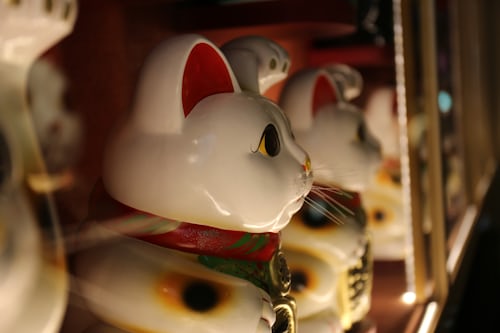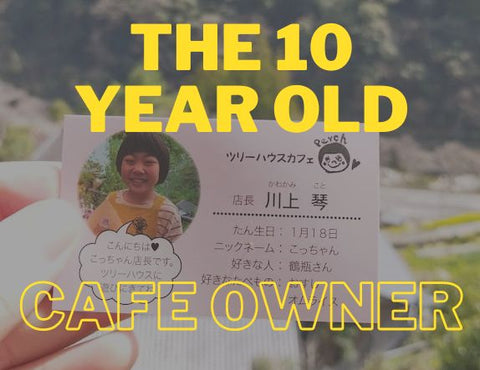
Who is the lucky cat Maneki Neko?
1. What Maneki Neko Means
Fortune Cat is known as Maneki Neko in Japanese, which means “beckoning cat.” The cat has its paw raised as if it’s waving in good fortune for its owners. In Japan the beckoning motion is different than most Western countries, almost the opposite. Other common monikers include Lucky Cat, Money Cat, Waving Cat and Welcoming Cat.
2. The Legends Behind the Maneki Neko
There hasn't been much agreement on exactly how Maneki Neko came into existence. However, most will agree that Lucky Cats first appeared during the Edo period in Japan (17th century to mid-19th century).
There are a couple of popular legends about the origins of the Maneki Neko. The first tells of a wealthy man who took shelter from a rainstorm under a tree next to a temple. He noticed a cat that seemed to be beckoning to him, so he followed it inside the temple. Shortly thereafter, lightning struck the tree he had been standing under. Because the cat had saved his life, the man was so grateful, he became a benefactor of the temple and brought it much prosperity. When he passed away, a statue of the cat was made in his honor.
Another common legend surrounding the Maneki Neko is a really peculiar one. A geisha had a pet cat that she adored. One day, it was tugging at her kimono and the owner of the brothel thought the cat was possessed, so he sliced off its head with a sword. (Yeah, gruesome! No cats were harmed in the writing of this article.) The flying cat head landed on a snake about to strike and the fangs killed the snake and saved the woman. The geisha was so distraught by the loss of her cat that one of her customers made a statue of the cat to cheer her up.
3. The Significance of the Raised Maneki Neko Paw
There’s actually a meaning behind which paw the Maneki Neko cat is holding up. If it’s the left paw, this is supposed to attract customers. If the right paw is raised, this invites good fortune and money.
They both sound pretty good to me, which is why sometimes you can find a Fortune Cat with both of its paws in the air. Two paws up can also represent protection.
4. The Symbolism Behind the Maneki Neko Colors
While you’ll most commonly see a white Maneki Neko with orange and black spots, there are quite a few color variations of the Maneki Neko and they each have a special meaning.
- Calico: Traditional color combination, considered to be the luckiest
- White: Happiness, purity and positive things to come
- Gold: Wealth and prosperity
- Black: Wards off evil spirits
- Red: Success in love and relationships
- Green: Good health
5. The Meaning Behind What the Maneki Neko Is Wearing and Holding
Maneki Neko is a finely dressed cat usually adorned with a bib, collar and bell. In the Edo period, it was common for wealthy people to dress their pet cats this way; a bell was tied to the collar so that owners could keep track of their cats’ whereabouts.
Fortune Cat figurines often holding other things in their paws. These include:
- A koban worth one ryo: This is a Japanese coin from the Edo period; a ryo was considered to be quite the fortune back then.
- The magic money mallet: If you see a small hammer, this represents wealth. When shaken, the mallet is supposed to attract wealth.
- A fish, most likely a carp: The fish is symbolic of abundance and good fortune.
- A marble or gem: This is another money magnet. Some people believe it’s a crystal ball and represents wisdom.
Lucky Cats can also be found holding gourds, prayer tablets, daikon radishes and ingots. These items also represent wealth and good luck.
Regardless of the name, legend, raised paw, color or item in its paw, you basically can’t go wrong with a Maneki Neko perched by your side.






